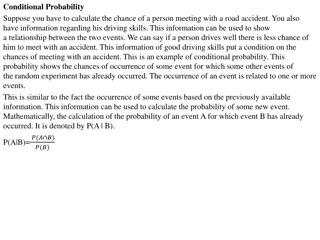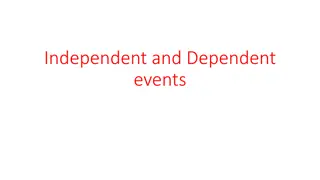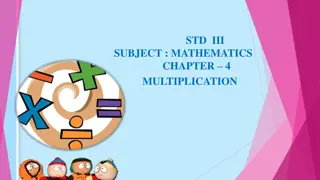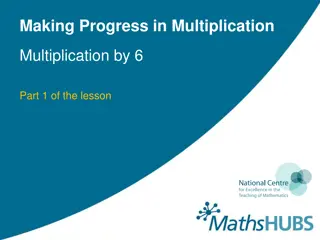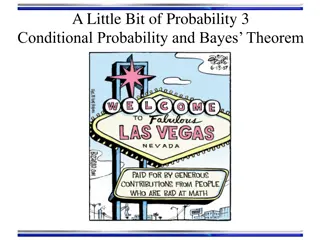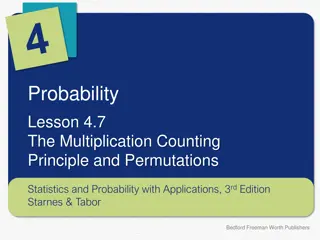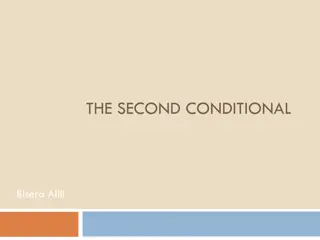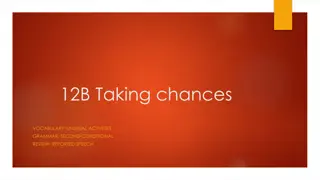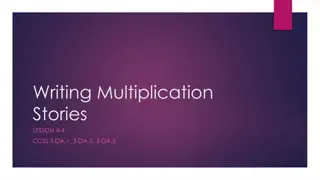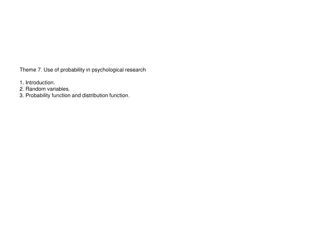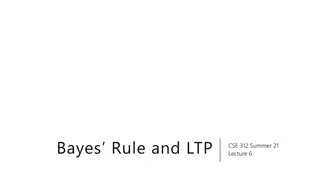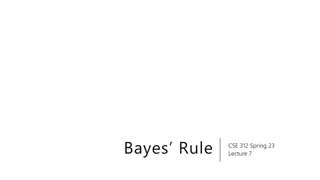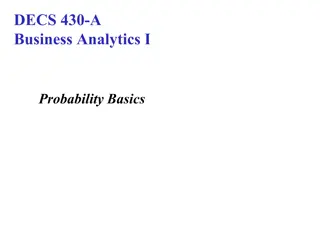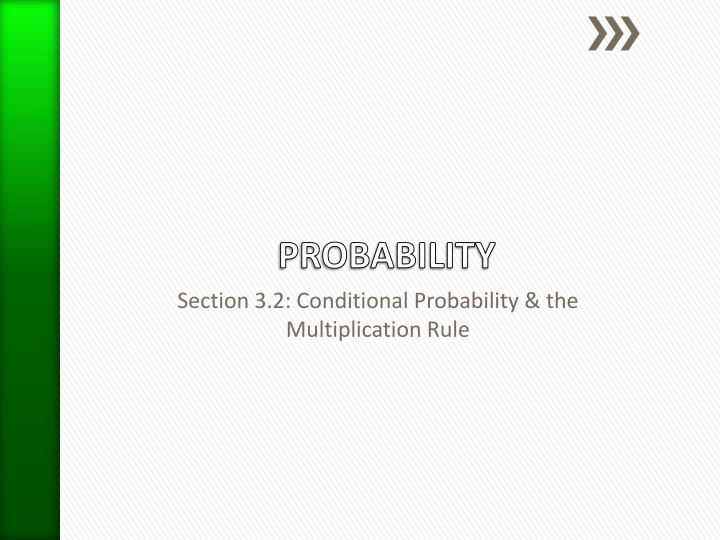
Conditional Probability and the Multiplication Rule
This learning material covers the concepts of conditional probability, independence, and the multiplication rule in probability theory. It explains how to calculate conditional probabilities given certain events have occurred, test for independence between events, and apply the multiplication rule when multiple events occur. Through examples involving dice rolls, card selections, and probability tables, learners can practice applying these concepts.
Download Presentation

Please find below an Image/Link to download the presentation.
The content on the website is provided AS IS for your information and personal use only. It may not be sold, licensed, or shared on other websites without obtaining consent from the author. If you encounter any issues during the download, it is possible that the publisher has removed the file from their server.
You are allowed to download the files provided on this website for personal or commercial use, subject to the condition that they are used lawfully. All files are the property of their respective owners.
The content on the website is provided AS IS for your information and personal use only. It may not be sold, licensed, or shared on other websites without obtaining consent from the author.
E N D
Presentation Transcript
PROBABILITY Section 3.2: Conditional Probability & the Multiplication Rule
Objective: To be able to understand and apply conditional probability, independence and the multiplication rule. A conditional probability is the probability of an event occurring, given that another event has already occurred. ?(?|?) reads the probability of A occurring given that event B has already occurred. ? ? ? =?(? ??? ?) ?(?|?) =?(? ??? ?) OR ?(?) ?(?)
Ex. 1 Roll a standard die. Find P(2|even) Find P(even|2) Is P(A|B) = P(B|A)
Ex. 2 Choose one card from a standard deck. Find the following: A. P(heart | red) B. P(2 | Red) C. P(King | Club) D. P(Face card | Diamond) E. P(Diamond | Red) F. P(Red | Diamond)
Ex. 3 Given the following table, find the probability of each event assuming 1 student is selected at random. Meal plan/Days 2 5 7 A 45 60 95 B 70 25 35 C 90 55 75 a. P( plan A) b. P(5 day plan) c. P(plan C) d. P(plan A | 7 day plan) e. P(2 day plan | plan C)
Independent Events: 2 events are independent if the occurrence on one event does not effect the probability of the occurrence of the second event. Test for Independence: If P(B|A) = P(B), the A and B are said to be independent. (P(A|B) = P(A) is also true) without replacement : means that an item is selected and NOT replaced prior to the next selection. (Dependent) with replacement : means that an item is selected and replaced prior to the next selection. (Independent)
Ex. Determine either logically or mathematically whether or not events A and B are independent. A = getting struck by lightning B = playing golf in a thunderstorm A = selecting a King B = selecting an Ace (with replacement) A = selecting a King B = selecting an Ace (without replacement)
Multiplication Rule: Used when more than one event occurs. The probability that events A and B occur in succession is ? ? ??? ? = ?(?) ?(?|?) If A and B are independent, then ? ? ??? ? = ?(?) ?(?) These rules can be extended to more than 2 events. Ex. Select 2 cards from a standard deck with replacement. Find P(Ace and Ace) P(Ace and King) P(10 and face card) P(Club and red)
Ex. Select 2 cards from a standard deck without replacement. Find P(Ace and Ace) P(Ace and King) P(10 and face card) P(Club and red)
Ex. Given the following table, answer the following questions. Time/Credits 12 15 18 AM 30 20 100 PM 50 60 40 a. What is the probability that a randomly selected student is taking class in the AM? b. Given that a randomly selected student is taking class in the AM, what is the probability that they are taking 12 credits?
c. Given that a randomly selected student is taking 18 credits, what is the probability that they are in the PM? d. Are taking 12 credits and taking class in the AM independent or dependent? Justify your answer mathematically.

